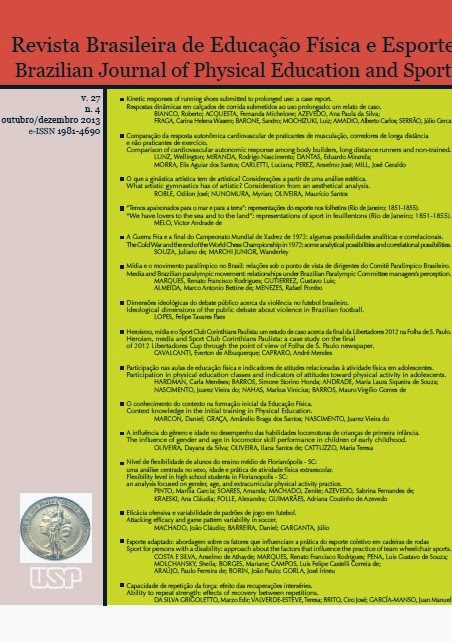Mídia e o movimento paralímpico no Brasil: relações sob o ponto de vista de dirigentes do Comitê Paralímpico Brasileiro
DOI:
https://doi.org/10.1590/S1807-55092013000400007Resumen
O objetivo deste trabalho foi investigar formas de relação entre a mídia e a divulgação e comercialização do movimento paralímpico brasileiro. A metodologia de pesquisa baseou-se: em entrevistas semiestruturadas com gestores do Comitê Paralímpico Brasileiro, relativas a processos de administração do movimento paralímpico e formas de relação deste com meios de comunicação; Análise de dados através do método "Discurso do Sujeito Coletivo"; Discussão fundamentada em categorias da obra de Pierre Bourdieu. RESULTADOS: a exploração do movimento paralímpico por parte da mídia brasileira é algo que pode ser melhorado; O esporte paralímpico ainda não possui um capital simbólico que o legitime comercialmente, embora tenha evoluído neste aspecto; Para alcançar maior relevância comercial, pode ser interessante que o movimento paralímpico continue seu processo de busca por aumento da profissionalização e se adeque a direções propostas pela mídia. Talvez com isso, venha a melhorar a exposição de sua vertente esportiva de alto rendimento, destacando sua capacidade de criar ídolos, produzir emoções prazerosas e atrair interesse de espectadores.Descargas
Los datos de descarga aún no están disponibles.
Descargas
Publicado
2013-12-01
Número
Sección
Sociocultural
Licencia
Todo o conteúdo da revista, exceto onde está identificado, está licenciado sob uma Licença Creative Commons (CC-BY)
Cómo citar
Marques, R. F. R., Gutierrez, G. L., Almeida, M. A. B. de, & Menezes, R. P. (2013). Mídia e o movimento paralímpico no Brasil: relações sob o ponto de vista de dirigentes do Comitê Paralímpico Brasileiro . Revista Brasileira De Educação Física E Esporte, 27(4), 583-596. https://doi.org/10.1590/S1807-55092013000400007


